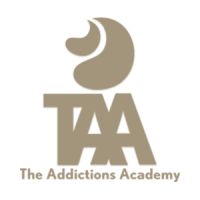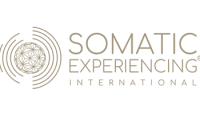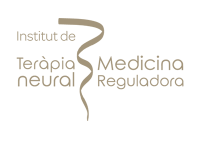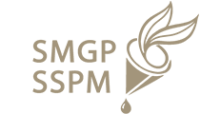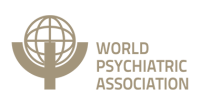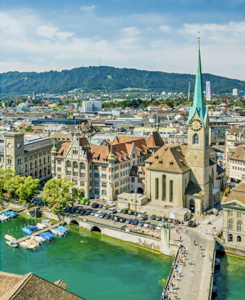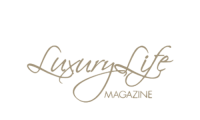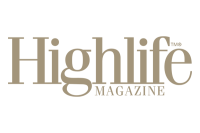What is Rhinoplasty
12 Minutes
Rhinoplasty is a surgical procedure that can alter the size, shape, or proportions of your nose. It may be performed to fix abnormalities caused by an injury, cure a congenital condition, or ease breathing difficulties. Rhinoplasty may be performed to enhance breathing, change the look of the nose, or both.
The upper section of the nose structure is bone, whereas the bottom part is cartilage. Rhinoplasty surgery can alter cartilage, bone, skin, or all three. Discuss with your surgeon whether rhinoplasty is right for you and what it can accomplish.
Your surgeon will evaluate your other facial characteristics, the skin on your nose, and what you want to change while considering nose rhinoplasty. If you are a surgical candidate, your surgeon will create a personalized treatment plan for you.
A nose job (also known as a rhinoplasty) is surgery to change the shape or function of the nose. Nose jobs are done to improve your appearance or for medical purposes. Some patients, for instance, may require surgery to fix a defect with the cartilage that separates one nostril from the other. Others may just wish to reduce the size or form of their nose.
The following are the reasons for rhinoplasty:
- Getting rid of a hump on the nose
- Bridge straightening
- Reshaping the tip of the nose
- Increasing or reducing the nostril size
- Putting the nose back together after an injury
- Opening breathing passageways
- Increasing or decreasing the size of the nose
A nose job is often performed on an outpatient basis, which means there is no inpatient hospitalization. You will be given either general or local anesthetic. You will sleep through the procedure if you have general anesthesia. The patient is sedated and the nose is numbed, making it impossible for them to feel pain.
The surgeon makes incisions within the nose during an operation. The surgeon may additionally make cuts at the base of the nose in more challenging cases. The interior bone and cartilage are then reshaped by the surgeon to provide a more attractive appearance.
The architecture of your nose and other facial characteristics will be evaluated by the surgeon. They will be able to inform you if your hopes are reasonable after this review. The surgeon will also take into account your general health and should explain the dangers, recuperation time, and costs to you.
There are several methods for remodeling the nose. When you decide to proceed, the surgeon should explain exactly what they intend to accomplish.
Rhinoplasty surgery is performed as follows:
Anesthesia
During the surgical operation, you will be given medications to help you relax. There are two options: general anesthesia or intravenous sedation. Your doctor will advise you on the best option for you.
Making an incision
Rhinoplasty can be done both closed (incisions are concealed within the nose) or open (a cut is made all across the columella, the short strip of tissue that divides the nostrils).
The skin covering nasal bones and the cartilages is gradually lifted through these incisions, providing access to remodel the nose structure.
Remodeling the nose shape
A big nose can be trimmed by removing cartilage or bone. Occasionally, cartilage grafts are required during nose surgery.
The cartilage from the septum, the separation in the center of the nose, is most usually used for this purpose. Occasionally, ear cartilage or a portion of rib cartilage is used.
Fixing a deviated septum
To improve breathing, the septum can be aligned and the extensions inside the nose are reduced if it has deviated.
Finishing the incision
Once the underlying nose structure has been sculpted to the appropriate shape, the nose skin and tissue are redraped and surgical incisions are closed.
To change the size of the nostrils, further incisions can be made in their natural creases.
Wait For the Results
Gauze packing and splints may be used to support the nose as it heals for a few days to final results.
Before planning rhinoplasty, you should meet your doctor to discuss critical criteria that influence whether the procedure is likely to be successful for you. The following are typically discussed at this meeting:
Detailed medical records. Among other things, your doctor will inquire about your medical history, including any previous procedures or medications you are currently taking.
Physical Exam. Your doctor can get a better idea of what has to be done by looking at your physical attributes, like the thickness of your skin and the tensile strength of the cartilage at the tip of your nose.
Photographs. Photographs will be taken of your nose from various angles by a doctor’s office employee. These images will be used by your doctor for before and after surgical evaluations, as well as for long-term assessments.
Expectations. What are you hoping to get out of this? You and your doctor should discuss your motives and expectations in advance of the procedure. To make an informed decision, your doctor will go over the pros and cons of rhinoplasty.
As mentioned, rhinoplasty is either done under general anesthesia or with intravenous sedation. In either case, you won’t feel pain or discomfort during the procedure. However, there might be some discomfort following the procedure. Unless there are other complications, rhinoplasty pain is usually easily revealed with oral analgesics.
Rhinoplasty can cause varying degrees of discomfort, however, the majority of patients report that the pain is mild to moderate. Your nose may feel a little achy the first night following surgery but it will soon feel much better. Nasal congestion following surgery is a significant concern for many individuals than discomfort.
Regardless of the severity of discomfort, it usually lasts between 36 and 72 hours. However, it has been shown that patients who have been bumped or manipulated are more likely to experience long-term pain.
After surgery, your nose will remain sensitive for a few months. At this stage, your nose is still sensitive to touch, thus healing is important to the success of the procedure.
Depending on the type of rhinoplasty procedure you have, you may suffer a range of pain sensations.
- The bruising will slowly fade with each day.
- Swelling will continue to subside.
If you have any discomfort, your doctor will give you advice on how to minimize it so that you can heal as soon as possible. You can aid your nose recovery by allowing it to heal itself naturally. If no manipulation is done, your nose will be healed in around 3 months or 100 days. Your looks, on the other hand, will continue to improve throughout the year.
The following are some of the complications of rhinoplasty surgery:
Aesthetic concerns
One of the most common complications after nose rhinoplasty is a new nose that the patient dislikes. A poor procedure can leave a patient with a beak-like appearance, a bump on the nose, multiple deformities, a crooked or unequal bridge, or an asymmetric nasal tip, for instance. Sometimes, the patient may be dissatisfied with the way their nose looks simply because it is unattractive or unnatural.
Revision surgery including cartilage transplants is sometimes the only option for these patients. Revision surgery may not be able to fix a “poor” nose procedure because the nose is so sensitive and complex.
Technical know-how and an artistic eye are essential to avoid complications during the rhinoplasty procedure. Considering that rhinoplasty is a blend of art and science, this is essential. Consequently, a high degree of dexterity and a careful technical approach are required to provide a successful outcome.
Over several visits, professionals spend considerable time looking over the details of your nasal architecture and helping you figure out what has to be done to correct it. They won’t just take a picture of you and then retouch it to make your nose look perfect. They’re confident that, although this is a simple and quick consultation, it’s the root of everyone’s discontent. As a result, they’ll be honest with you about your body’s limitations and whether or not your goals are realistic.
Infection and bleeding
A rhinoplasty patient should be aware of these rare occurrences. As with any surgical procedure, there is a chance of significant bleeding and/or infection. Luckily, your surgeon can take steps to minimize these risks and assure your well-being during the surgery. If you’re going under the knife, an expert surgeon will tell you to stop taking any pharmaceuticals, vitamins, or anti-inflammatory medications for 2 weeks before the procedure. For a week before the surgery, you must apply a powerful antibiotic cream to your nose. To ensure your health and safety during the healing process, you will be given antibiotics both before and after rhinoplasty, as well as precise aftercare instructions.
Difficulties in breathing
This is one of the most dangerous complications of rhinoplasty. Cosmetic rhinoplasties are most commonly used to make noses smaller. The nose is routinely sacrificed to achieve this goal. Over time, the nasal canal gets compromised due to the weakening of the nose. Snoring, reluctance to exercise and difficulty sleeping are all symptoms of this condition. To keep this from happening to their patients, skilled surgeons use a reconstructive approach rather than a reductive one throughout all rhinoplasties. In other words, they enhance the appearance of the nose without compromising its structural integrity. It’s done by being cautious in certain cases and supplementing it with cartilage transplants in others. Your breathing will not only be unaffected, but he will often even improve this critical structure, making recovery from surgery much easier.
A nose job might leave unsatisfactory scars.
There are two ways to perform a rhinoplasty. Using the closed procedure, the nose is simply sliced open with a scalpel. When compared to the closed approach, the open procedure involves only small incisions along the skin that joins the two nostrils. In both cases, poor scarring can be a problem. It is possible to have an irregular nasal contour as a result of invasive scar tissue within the nose, for instance. Outside of your nose, visible scars from a nose job could take away from your overall look and draw attention to your procedure.
Patients are concerned about rhinoplasty scars, and experienced surgeons go to great lengths to ensure that any resultant markings are minimal, faint, and well-healed, to the satisfaction of their patients To ensure that their patients receive the best possible cosmetic results, they physically close all of their wounds. Take your time to pay attention to small details. A skilled surgeon’s rhinoplasties take twice as long as those of a less-skilled practitioner.
Perforation of the nasal septum
The wall in your nose that divides the right and left nostrils is called the nasal septum. Occurs seldom during nose surgery, but when it does it can cause bloody discharge and crust, as well as difficulty in breathing and discomfort. It can also lead to the eventual collapse of the nose if left untreated.
Your surgeon would likely advise you to stay away from the things listed below to minimize the risk of swelling or bleeding and ensure a speedy recovery.
Limit physically demanding activities
A few weeks following surgery, your doctor will tell you to avoid strenuous exercise and workouts. Avoid heavy weightlifting, aerobic exercises, jogging, running, and high-impact walking, all of which are examples of strenuous activities. During the first 2 weeks following nose reshaping surgery, you should avoid any activity that puts stress on your nose. By the third week, the majority of patients are feeling well enough to resume their normal physical activities.
It is, however, vital that you consult with your plastic surgeon before making any decisions about this. After a nose reshaping procedure, swimming should be restricted for six weeks. Until the cast is removed, you must keep the area around your nose dry. Basketball and other contact sports should be avoided for at least four to six months after an injury.
Avoid engaging in sexual activity
For the first 3 weeks following surgery, many rhinoplasty specialists advise their patients to reduce their sexual activity. To avoid potentially fatal blood clots, however, you should only take a few brief steps around the home each time you get up.
Be careful with nose blowing
You might need to blow your nose if you have allergies, a cold, or the flu. To protect those who have recently had rhinoplasty from infection, wash hands thoroughly and frequently and prevent contact with the sick. Hand sanitizer is an option for some patients who want to keep their hands clean while they are out and about. Take careful care of yourself throughout the first several weeks of recovery so that you don’t get sick.
Keep Your Nose Dry
The splint on your nose must be maintained dry at all times until it is removed (around a week post-surgery). Taking a shower, then, should be avoided at all costs. You can use a damp cloth to clean the remainder of your body and some areas of your face. No matter how you clean, make sure to avoid getting water in the nasal area.
Wearing glasses
During your rhinoplasty recovery, you will be required to remove your spectacles. The delicate tissues and cartilage on the bridge of your nose might be damaged by glasses that rest there. If you need to use contact lenses for a short period, do so.
Spending time in the sun
Do you want to relax in the sun? That is, not until you’ve had nose-contouring surgery. You should avoid exposing your nose to sunlight even after the dressings have been taken off, as doing so may cause discoloration or increase the risk of certain problems. Use a broad-spectrum sunscreen and wear a hat or, if possible, a helmet to shield your surgery site from the sun while you recuperate.
Avoid alcoholic beverages and smoking
Most surgeons believe drinking and smoking to be high-risk practices for people recovering from surgery of any kind. It has been demonstrated that nicotine from cigarettes decreases blood flow and hinders recovery. On the other side, alcohol has the potential to interfere with medications and thin the blood, which could lead to serious bleeding. Don’t eat or drink anything with caffeine or alcohol for the first three weeks after surgery.
Be careful with nose touching and/or bumping
After a rhinoplasty procedure, many patients are curious about how their nose will look and feel. Nonetheless, it is not recommended to poke, press, or touch while healing from rhinoplasty is underway. This might lead to pain, misalignment of the nasal tissues, or even the loss of the results of the nose job operation. Anything that might exert pressure on the surgical site or injure it must be kept out of the operating area.
Avoid applying makeup
To hide bruising around the eyes and nose, some patients, especially women, may feel obliged to use cosmetics. For the first two weeks after your rhinoplasty, hold back from using makeup to allow your body to heal. The risk of infection may increase if you apply makeup to recently healed skin.
FAQs
How Long Is Recovery For Rhinoplasty?
Make plans to take a week off from school, work, or other responsibilities. During the first week, you will gradually feel better. Patients usually feel like themselves again one week following surgery.
There’ll be some edema after surgery. Although most individuals cease experiencing the swelling after a month or two, it can take months to resolve. People are usually able to resume most activities within a week and all activities within two to four weeks.
What Distinguishes Rhinoplasty From Septoplasty?
Rhinoplasty is a nose surgery that alters the shape of the nose. Because breathing and nose shape are linked, rhinoplasty may be undertaken not only to change the appearance of the nose but also to facilitate airflow through the nose.
Septoplasty is a procedure that straightens the wall within the nose that separates the nasal cavity into right and left sides (nasal septum). When the septum is misaligned, it can make breathing thru the nose difficult. A septoplasty is frequently performed in conjunction with a rhinoplasty.
HOW SENSES CAN HELP WITH Aesthetics
Senses is a leading provider of luxury addiction and mental health treatment for affluent individuals and their families, offering a blend of innovative science and holistic methods with unparalleled individualised care.
A UNIQUE METHOD
successful and proven integrative holistic conceptOur program consists of treating only one client at a time individually designed to help you with all the problematic aspects of your life. All individual treatment sessions will be held at your private residence.
more infoYour program is designed based on your personal needs. The team will exchange daily information and adjust the schedule as we go. Our therapists will work with you treating integrative not just the symptoms and goes beyong your stay to ensure lasting success.
more infoOur biochemical imbalance can be affected by diet and stressful life events, but it often goes back to genetics and epigenetics. We do specific biochemical laboratory testing to determine an individual’s biochemical imbalance. Combining the results of the lab tests with anamnestic information and clinical tests, we prescribe an individualized and compounded vitamin, mineral, nutrient protocol to help recover from various disease states.
more infoOur experts combine the best from psychological treatment, holistic medicine to support you individually and providing complementary therapies all coordinated from one source working complementing each other integrative.
more infoUsing latest cutting-edge technology-based therapies such as Neurofeedback, tDCS, and SSP, we can track the biological patterns of your body, giving us valuable insight into your health and well-being as well support your brain and body performance and recovery with neuromodulation.
more infoOur chef and nutrition specialist will design your personalized diet plan supporting your body & mind recovery as well as helping with weight management. Nutrition workshops and mindful eating sessions will help you to maintain a healthy lifestyle.
more infoAesthetics TREATMENT LASTING APPROACH
0 Before
Send Request
0 Before
Define Treatment Goals
1 week
Assessments
1-4 week
Integrative Holistic Therapies
5-12 week
Aftercare
12+ week
Refresher Visit
Aesthetics Insights
latest news & research on AestheticsHow Long Until You Can Work out After Lip Fillers
Lip fillers are a wonderful method for achieving fuller, plumper lips. As with any treatment, the correct post lip filler care plan is essential to ensuring a positive experience and a speedy recovery
read moreHow To Prevent Bruising After Botox
However, Botox administration does not always result in bruising; in fact, the vast majority of individuals do not develop botox injection bruises after treatment.
read morePost Botox Care
If you would like to learn more about the things you should and shouldn't do after getting botox, continue reading as we're going to discuss what botox i
read moreAccreditations


